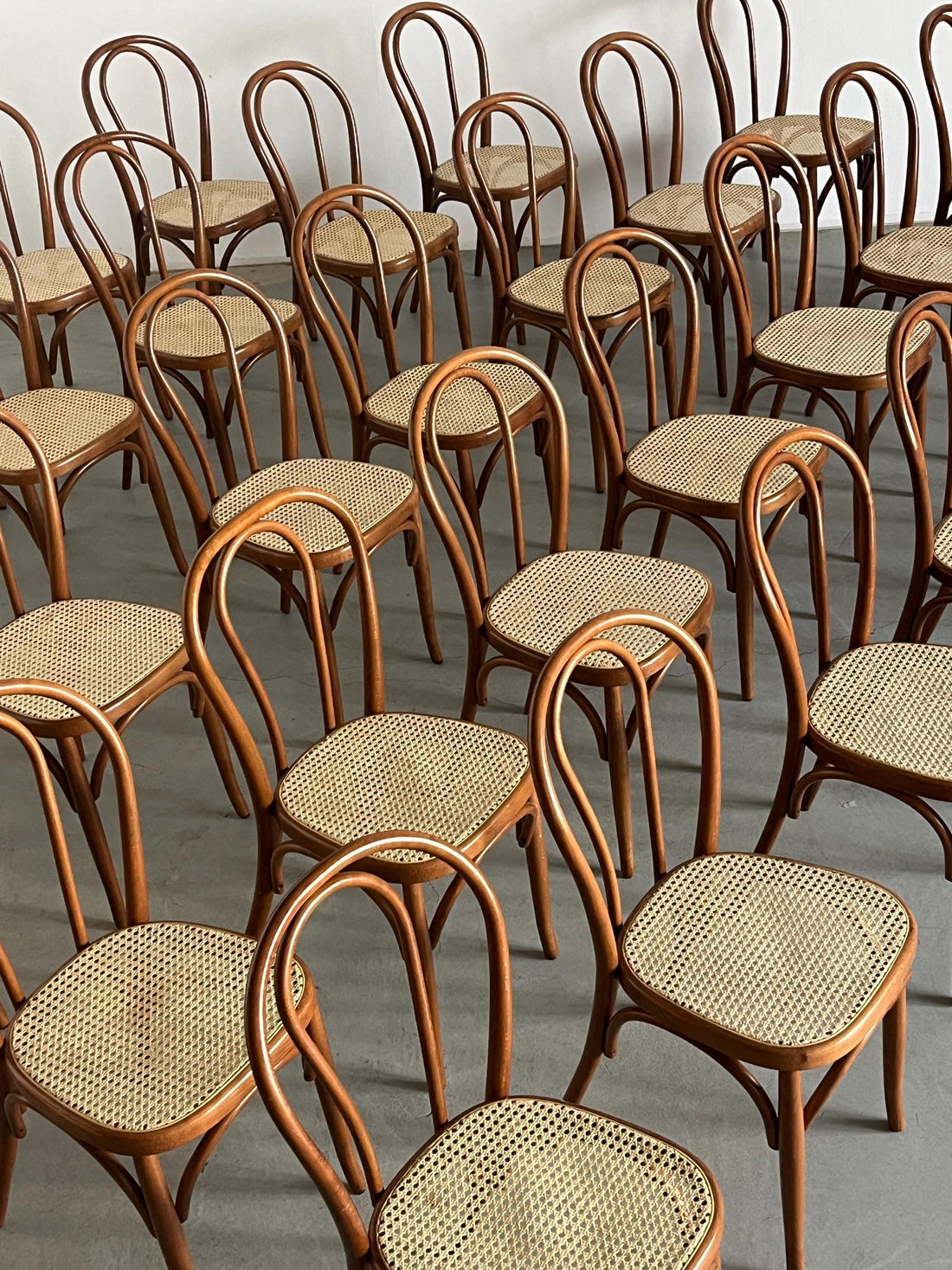
Old models from Thonet – what they have over today’s furniture
shares
Furniture comes and goes. Thonet remains. The old bentwood models are more than well-preserved classics – they demonstrate how radical simplicity creates good design.
The revolution begins with six parts
A chair made with just six wooden parts was a provocation in the mid-19th century. No ornamentation, no frills—just an idea: mass-producing furniture without sacrificing quality. Model No. 14, later known as the 214, became a blueprint for industrial furniture design. That it is still in production today is no coincidence—it's a response to the question of how little a chair needs to be successful.

Clarity that carries
Old Thonet models combine visual lightness with robust functionality. The bentwood technique lends tension to the form, while the typical Viennese canework ensures flexibility when sitting. No part is too much, no detail without a purpose. This focus on the essentials makes the chairs universally applicable – then as now.
What you get out of it
Those who live with vintage Thonet chairs bring a certain attitude into their home: against excess, for substance. These models not only fit into minimalist spaces – they also bring structure and calm to dense interiors. And they are more than just furniture: daily proof that design creates alternatives – to trends, to the throwaway mentality, to fleeting design.
Why originals count
Replicas may capture the look, but not the essence. A genuine vintage piece carries history – visible in its patina, tangible in its weight, tangible in its use. It represents a time when furniture was not considered a matter of style, but a cultural achievement. Owning an original not only owns an object, but also a concept of quality.
Show your attitude – with a chair
An old Thonet isn't a nostalgic look back. It's a clear decision: for permanence, for the will to design, for spaces with a statement. Choosing such pieces isn't simply furnishing—it's taking a stand.








